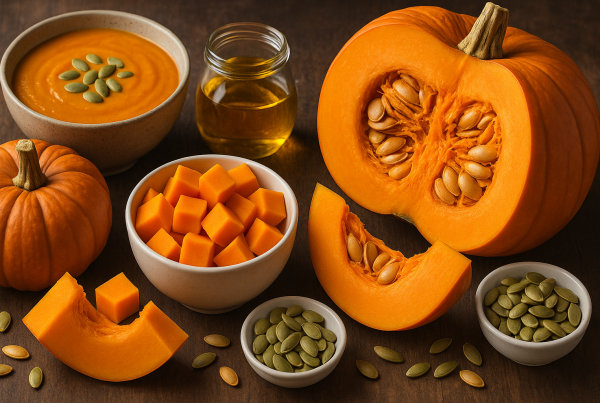Beyond Halloween: The Nutritional Power and Varieties of Pumpkins Explained
As the autumn leaves begin to fall and the chill in the air heralds the arrival of Halloween, pumpkins take center stage in seasonal celebrations. But beyond their iconic role as jack-o’-lanterns, pumpkins harbor a rich tapestry of history, nutritional value, and cultural significance that many might not be aware of. Originating from Central America, these versatile gourds have been cultivated for thousands of years and were originally used for their seeds and flesh long before becoming a staple in festive decorations. In this exploration, we will delve into the fascinating world of pumpkins, discussing their origin and scientific classification, uncovering the diverse varieties available, and highlighting their impressive nutritional benefits. Join us as we journey beyond Halloween to discover the full potential and importance of pumpkins in our lives.
The Nutritional Power of Pumpkins
Rich in Vitamins and Minerals
Pumpkins are a powerhouse of essential vitamins and minerals, making them a valuable addition to any diet. They are particularly rich in vitamin A, with a single cup of cooked pumpkin providing more than 200% of the recommended daily intake. This is primarily due to its high beta-carotene content, which the body converts into vitamin A, crucial for maintaining healthy vision and immune function. Additionally, pumpkins contain significant amounts of vitamin C, which supports the immune system, and vitamin E, an important antioxidant. Minerals such as potassium, which helps regulate blood pressure, and magnesium, essential for muscle and nerve function, are also abundantly found in pumpkins. Incorporating this nutrient-dense gourd into meals can contribute to overall health and well-being, making it much more than just a seasonal decoration.
High Fiber Content
Another notable nutritional benefit of pumpkins is their high fiber content. Dietary fiber is essential for maintaining a healthy digestive system, and pumpkins provide both soluble and insoluble fiber. Soluble fiber helps to lower cholesterol and regulate blood sugar levels, while insoluble fiber aids in promoting regular bowel movements and preventing constipation. A single cup of cooked pumpkin contains about 3 grams of fiber, contributing to the recommended daily intake of 25-30 grams. This makes pumpkins an excellent choice for those looking to improve their digestive health or maintain a balanced diet. Furthermore, the fiber in pumpkins can help you feel fuller for longer, which may assist in weight management. Including pumpkins in your meals can thus provide a satisfying and nutritious option that supports overall digestive health.
Low-Calorie Superfood
Pumpkins are often celebrated as a low-calorie superfood, making them an ideal choice for those mindful of their caloric intake. With just about 50 calories per cup of cooked pumpkin, this versatile gourd offers a nutrient-dense option without the added calories. This low-calorie count does not come at the expense of taste or nutrition. Instead, it allows you to enjoy the rich flavors and benefits of pumpkins without guilt. Their natural sweetness and creamy texture make them a perfect ingredient for soups, stews, and even desserts. Moreover, the high water content in pumpkins helps keep you hydrated and full, playing a key role in weight management and overall health. Embracing pumpkins in your diet can help you enjoy delicious meals while maintaining a healthy lifestyle, proving that nutritious food can also be tasty and satisfying.







